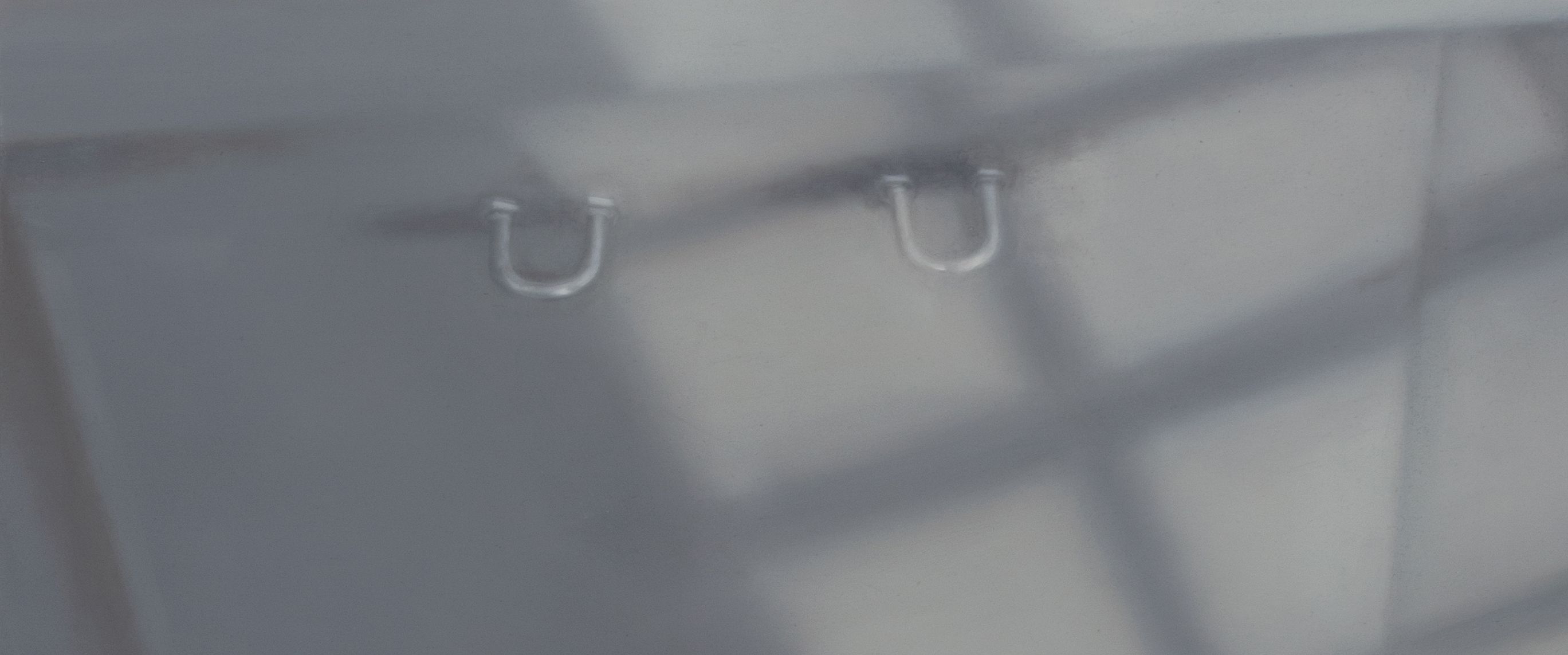A temple distinguishes itself from a reliquary through its comparatively mammoth scale — implications of sublimity and enormity turn to preciousness, and the hand becomes more significant. A pyramid becomes a building when it is large enough to fit inside, and conversely becomes more vague when that function is eliminated. Despite associations to tombs, mausoleums, etc., its function is to be an object of admiration or a container. Cleaning out someone’s home after their death exemplifies a spatial reduction in favor of the object. A house is sold and an heirloom supplants the presence of that environment. All conditions of this presence are now condensed within the object.
Miniaturization offers a sampling of much more intricate connotations, and underscores opportunities for display, explanation, or reverence. Display both obfuscates and illuminates because it is inherently selective. Miniaturization also transmutes the concealability of a large structure or object, processing it into something small enough to hoard. In this transformation, sacrifices of detail must be made and creative liberties taken. An idea, thoughts, or feelings, become reified in this object. If the object is admired again and again, especially on display, is its function an altar? Dedication to its creation and preservation at least indicate an importance. Reverence of the object (even one implicated with negative associations), dedication to its existence (even as an imperfect duplicate), and the opportunity to admire make the miniature a fetish object. Devotion ensures that.
A dollhouse insists on translating a home into an object. Level of detail can be determined by the contractor. With a reduction in scale, the supporting structure of the house becomes thinner and more delicate. The smallest dollhouse in the universe might have a translucent membrane for walls — it might quiver and take flight with the slightest breeze.
A significant object’s scale might be altered through a segmentation. Reduction does not need to be holistic and is sometimes achieved by physically excavational methods. A separation from a larger piece has an implied violence, even performed under the most clinical or surgical of means. The fracturing is brutal. A chunk of something — a sample — can be retrieved for observation or display, or for archival purposes. Its scale becomes more manageable through this method of reduction, but its significance and the context to which it gestures are even further complicated. Much like the vacated home, it becomes condensed and thus softened, details blurred.
The still life painting provides a unique opportunity to take a declarative position in presenting meaningful objects. It is important that the object itself can be kept, or maintain its function, and that the painting is a translation of it. A painting is similar to the miniature in this way, both resulting in condensed physical manifestations of disparate subjects. Because of their vagueness or obscurity, and despite their apparent fidelity, the paintings in Reposoir have distinctly positioned the practice of making and the act of constructing a still life ahead of the understanding of the personal significance (to the artist) of symbols within the works. The privacy generated through this act underscores the insistence on process. Their materiality asserts their objecthood
Perhaps the translation is not so representational. Sometimes the subject is just a stand-in for some enormous projections, and that makes representationalism problematic. Dominick Di Meo’s skulls and rubble establish a generative visual language with a proclivity for a few themes: catacombs, altars, funerals, brutality, bodily harm, illness, death, and ghosts. The devotion of making, especially within a repetitive visual parameter, implicates ritualism. Their miniaturization and reference to the diorama lends a daintiness to otherwise severe construction materials. In his Relief Wall Drawings, rigidity of material is deceptive — with inspection it is understood that the immutable support was once flexible fabric, and the scale of the cross-hatched wire reduces it to something like lace. Their scale asserts that they are altars rather than monuments. Even his works Studies for Monuments function as shrines at ‘study’ scale — they are consequently more intimate, and just as loaded.
The process of making is a gothic process. Devotional objects are catalytic of big feelings. Both artists have struggled with severe and chronic illness, and thanatological themes imbue a bodily and psychological malaise into the work (the studio as catacomb, the process as funeral, the studio as…heaven?). Symptomatic consequences of illness elicit a retreation into the studio or home, to be further consumed by making. Objects of affection assist greatly in the nesting process, and provide fuel for work.
A doll can embody a subject of a portrait; an object or arrangement can be built of materials that each have discrete significance, but assumes new meaning through its assemblage; the language of material is exigent, and clarity may come only through an examination of a body of work; an altar (or its ephemeral sibling, a reposoir) helps us practice conscious remembering; cognizant hoarding (as well as art-making) can be a mnemonic device; an approximation of a thing can get an idea across; handheld scale can augment intensity.
– Ella Rose Flood, 2024




















































































































